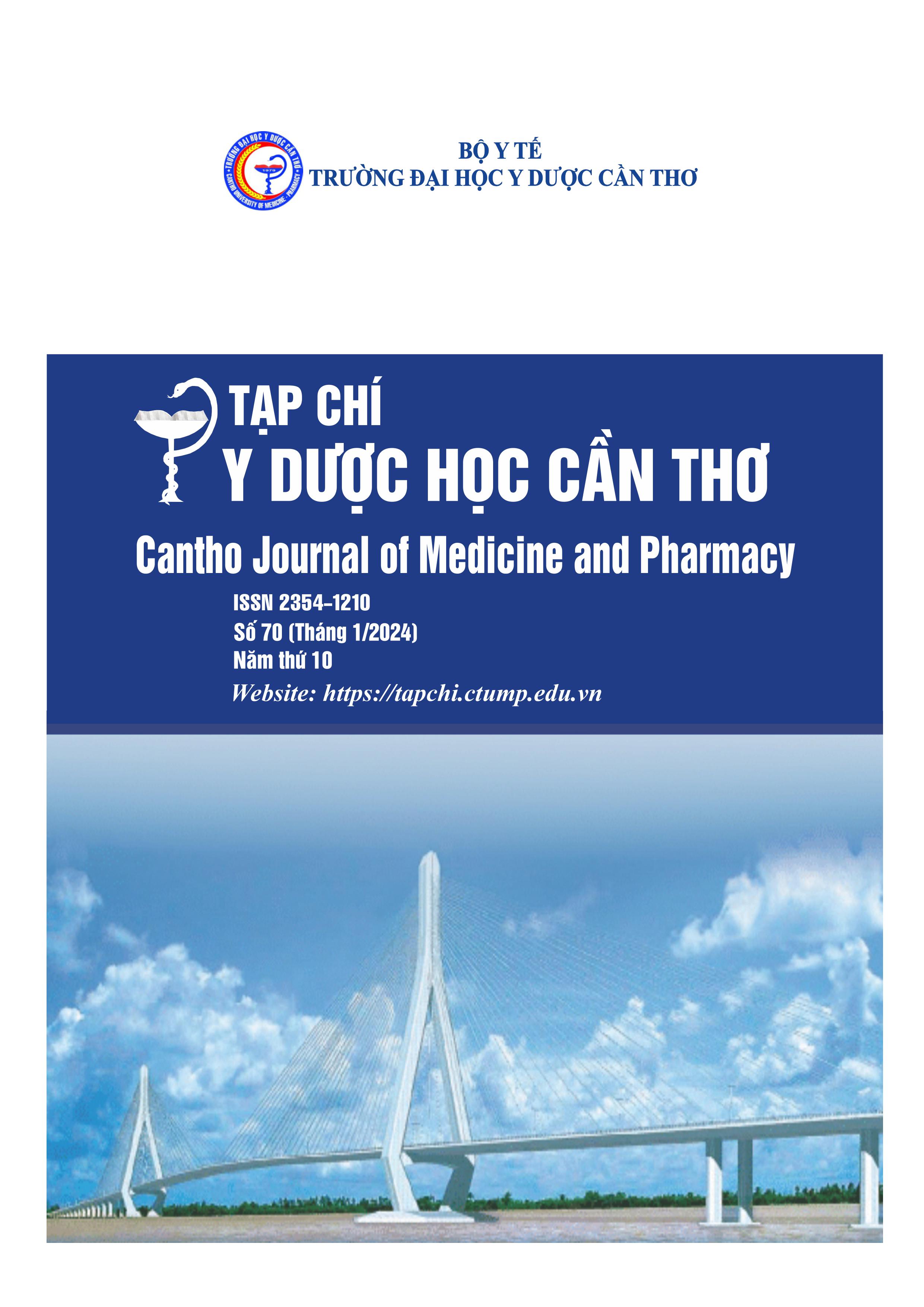RESEARCH ON CLINICAL CHARACTERISTICS, SOME ONSET FACTORS AND RESULTS IN TREATMENT OF TENSION-TYPE HEADACHE PATIENTS AT CAN THO CENTRAL GENERAL HOSPITAL
Main Article Content
Abstract
Background: Tension-type headache is the most common type of primary headaches, can affect all aspects of person’s life including work, school and family. Early recognition, diagnosis and appropriate treatment aim to reduce the negative effects of the disease on patients. Objective: To investigate the clinical characteristics, some onset factors and treatment outcomes of patients with tension-type headache. Materials and methods: 65 invididuals with tension-type headache admitted to Can Tho Central General Hospital from December 2022 to June 2023 were investigated clinical features, onset factors and follow up treatment. Results: The mean age of disease was 46.51±16.38, Female patients accounted for 63.1%, with a male/female ratio of 1/1.7. Patients living in urban areas accounted for 46.2%. The onset time of pain is usually noon (50.8%), the most common pain site is the forehead area (58.5%), mild to moderate pain (92.3%). The common trigger is insomnia (40%). Treatment with analgesics alone or in combination with antidepressants, sedative-anxiolytics, muscle relaxants help to improve clinical outcomes as assess by the NRS. Conclusion: Tension-type headaches are age and sex related. In addition to simple analgesics, antidepressants, sedative-anxiolytics, and muscle relaxants are also clinically beneficial and improve quality of life.
Article Details
Keywords
Tension-type headache, treatment, Numeric rating scale
References
2. Headache Classification Committee of the International Headache Society. Definition of term, The International Classification of Headache Disorders, 3rd edition. Cephalalgia. 2018. 38(1), 209.
3. Global burden of Disease 2016 Disease and Injury Incidence and Prevalence Collaborators. Global, regional, and national burden of migraine and tension-type headache, 1990–2016: a systematic analysis for the Global Burden of Disease Study 2016. Lancet, 386(9995). 2018. 743800. doi: 10.1016/S0140-6736(17)32154-2.
4. Golobal Burden of Disease Study 2015 Collaborators. Global, regional, and national incidence, prevalence, and years lived with disability for 301 acute and chronic diseases and injuries in 188 countries, 1990-2013: a systematic analysis for the Global Burden of Disease Study 2013. Lancet Neurol. 2015. 386(9995), 743-800. doi: 10.1016/S0140-6736(15)60692-4.
5. Li X., Zhou J., Tan G., Wang Y., Ran L. Chen L. Clinical characteristics of tension-type headache in the neurological clinic of a university hospital in China. Neurol Sci. 2012. 33(2), 283-287, doi: 10.1007/s10072-011-0675-4.
6. Pryse-Phillips, W., Findlay, H., Tugwell, P., Edmeads, J., Murray, T. J. et al. A Canadian population survey on the clinical, epidemiologic and societal impact of migraine and tensiontype headache. Can J Neurol Sci. 1992. 19(3), 333-339.
7. Nguyễn Thị Thuý Lan, Cao Phi Phong. Nghiên cứu đặc điểm lâm sàng và phân loại đau đầu mạn tính hằng ngày. Luận án tiến sĩ. Đại học y dược thành phố Hồ Chí Minh, Thành phố Hồ Chí Minh. 2010.
8. Karli N., Akgöz S., Zarifoğlu M., Akiş N. & Erer S. Clinical characteristics of tension-type headache and migraine in adolescents: a student-based study. Headache: The Journal of Head and Face Pain. 2006. 46(3), 399-412. doi: 10.1111/j.1526-4610.2006.00372.x.
9. Köseoglu E., Naçar M., Talaslioglu A. & Cetinkaya F. Epidemiological and clinical characteristics of migraine and tension type headache in 1146 females in Kayseri, Turkey.
Cephalalgia. 2003. 23(5), 381-388. doi: 10.1046/j.1468-2982.2003.00533.x.


